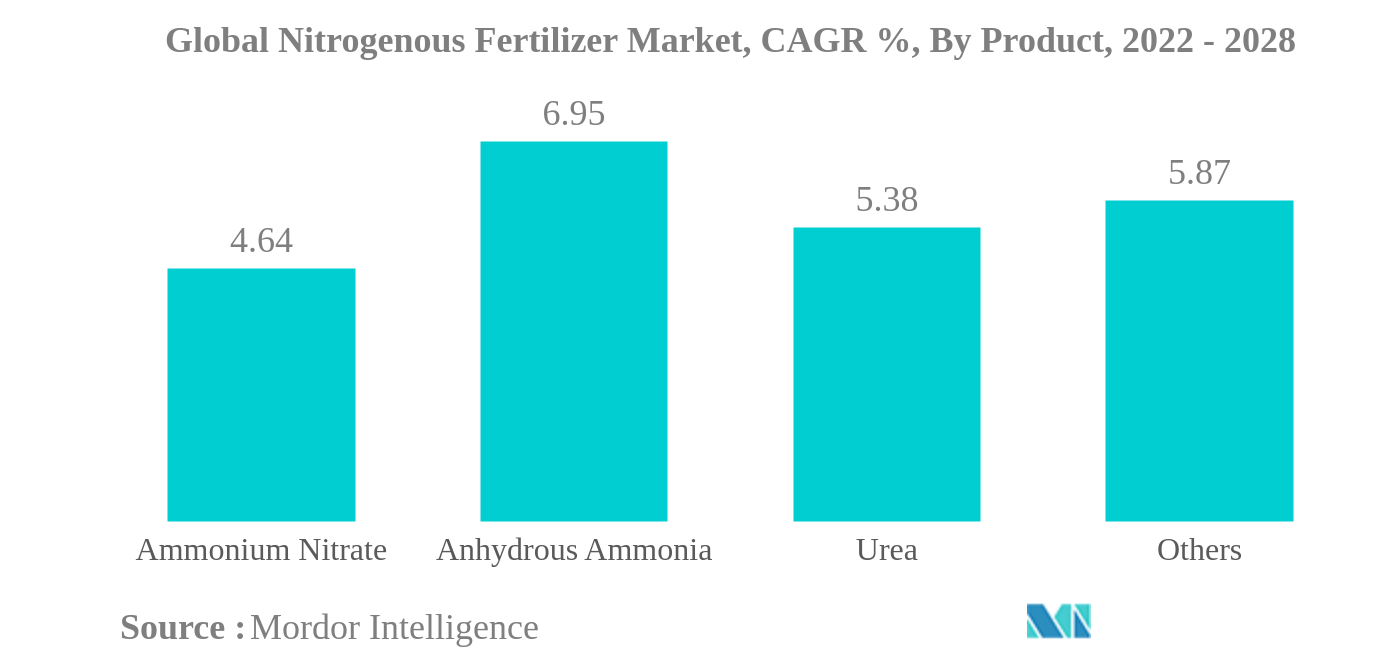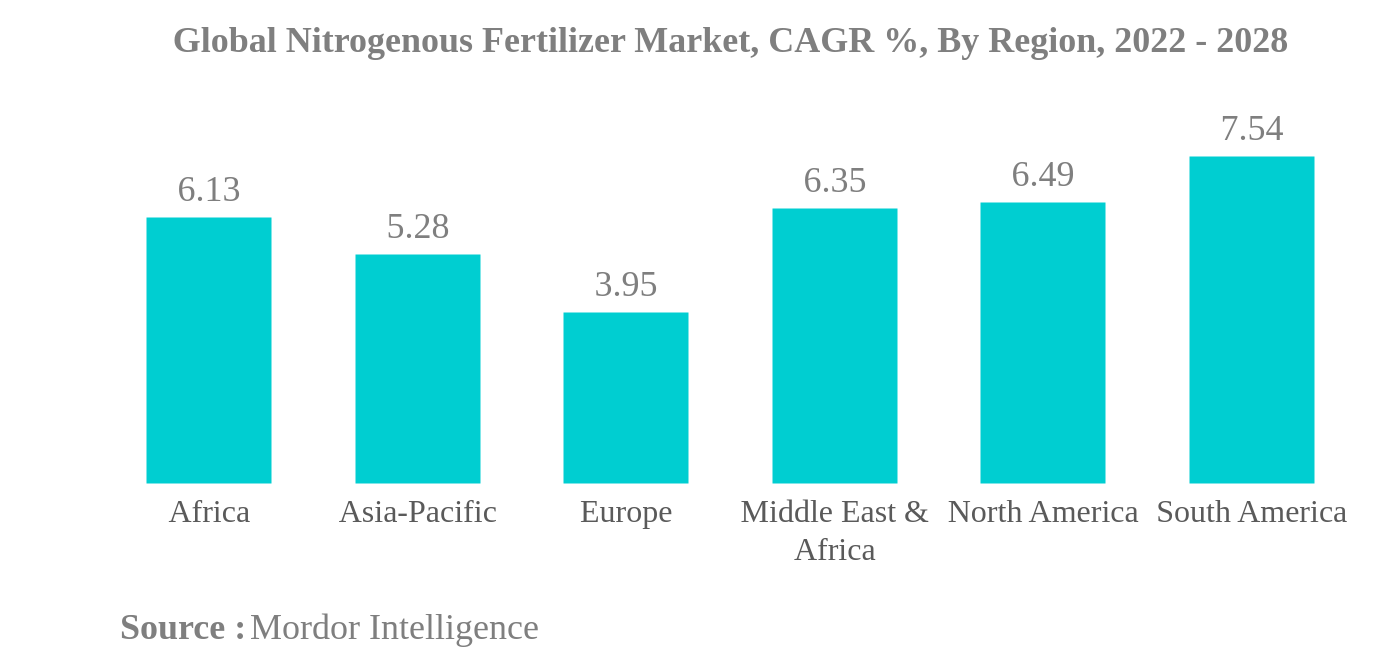Market Trends of global nitrogenous fertilizer Industry
This section covers the major market trends shaping the Nitrogenous Fertilizer Market according to our research experts:
Urea is the largest segment by Product.
- Urea is the most important and most used nitrogenous fertilizer. In the year 2022, it accounted for 62.5% of the total consumption of nitrogenous fertilizers globally. The global urea market was valued at USD 45.5 billion in 2021, with a volume consumption of 114.7 million metric tons in the same year.
- Anhydrous ammonia has the highest percentage of nitrogen content (82.0%) among all nitrogenous fertilizers, with readily available nitrogen in the form of NH3. The global market for anhydrous ammonia was valued at USD 1.36 billion in the year 2021, with a volume consumption of 2.8 million metric tons. However, the usage of anhydrous ammonia as a fertilizer is restricted to the countries in North America and is commonly used in the region's corn belts since it is a high nitrogen-consuming crop.
- Ammonium nitrate accounted for 6.8% (by value) and 10.0% (by volume consumption) among nitrogenous fertilizers in 2021. The share in consumption volume decreased by 1.0% from 11.0% in 2017 to 10.0% in 2022, which can be attributed to stringent regulations regarding the transportation, handling, and sale of ammonium nitrate in various parts of the world.
- Moreover, Asia-Pacific was the largest market for nitrogenous fertilizers in 2022. It accounted for a market share of 70.0%. In the Asia-Pacific region, China and India are the two largest consumers owing to their increasing population and large areas under cultivation.
- The global nitrogenous fertilizer market is anticipated to grow during the forecast period as it is the most demanded nutrient.

Asia-Pacific is the largest segment by Region.
- The global nitrogenous fertilizer market was valued at USD 63.4 billion in 2021, with a volume consumption of 183.4 million metric tons in the same year.
- Asia-Pacific is the largest nitrogenous fertilizer-consuming region and held a market share of 56.7% in 2021. China and India are the major agricultural producers in the Asia-Pacific region, and with a large availability of arable land, growing demand for food in line with increasing population, and substantial government financial assistance, the Asia-Pacific nitrogenous fertilizer consumption is expected to increase.
- Europe is the second-largest region for the market and accounted for a share of 19.0% in 2021. In the Rest of Europe regional segment, countries that consume the majority of fertilizers include Poland, Belgium, and Southeastern European countries. The segment accounted for 36.9% in the European nitrogenous fertilizer market, valued at about USD 4.84 billion in 2021. It is anticipated to record a CAGR of 3.7% during the forecast period.
- Europe, is followed by North America and South America with market shares of 12% and 11%, respectively. In North America, the United States accounted for about 82.2% of the total North American nitrogenous fertilizer market, valued at about USD 7.42 billion in 2021. Conventional fertilizers accounted for 63% and specialty fertilizers accounted for about 37.0% of the market value share in 2021.
- Nitrogenous fertilizers are the most important fertilizers in agricultural production. Moreover, an attempt to increase the yield and productivity, despite diminishing cultivated area through intensive cultivation and increased fertilizer application, is expected to boost the global nitrogenous fertilizers market during the forecast period.

